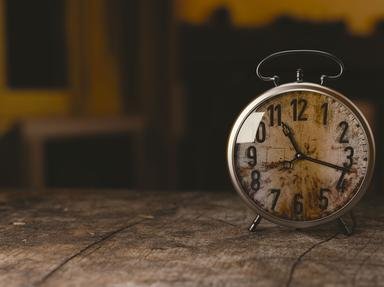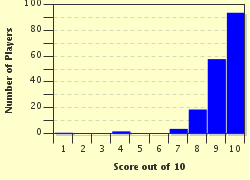Quiz Answer Key and Fun Facts
1. Gary Dahl became a millionaire in 1975-1976, selling pets from Mexico to lonely Americans, avoiding quarantine requirements and health paperwork. What did he sell?
2. Alvin "Shipwreck" Kelly started a fad in 1924 that lasted until the Great Depression gave people more to worry about. It required endurance and, well, more endurance. What was it?
3. The Bayside Boys did an English-language remix of this song by Los del Río (you've heard of all of them, right?), and an amazing record-breaking song and dance craze was born out of nowhere in 1996. It was pretty much over by 1997, but still hangs on as one of those dances everyone knows. What was it?
4. What singer, nicknamed The Swedish Nightingale, toured America in 1850-52 and started a mania of naming things after her, from kittens to boats?
5. People in the 1920s and 1930s made an enjoyable activity into humiliation and torture, and sold the sight to sadistic audiences. What did people do for dozens, sometimes thousands of hours straight, literally dropping from exhaustion?
6. Invented in 1974, this little puzzle peaked as a fad in the 1980s, but is still played today. Speedsolvers compete for time, but beginners just want the colors to cooperate. What is this toy, named after its inventor?
7. This dance craze started in 1959, was a symbol of that evil, raunchy rock and roll, and died out in the early 1960s when it became more acceptable. If I say one name, I may give it away, even though he wasn't first: Chubby Checker.
8. What hat, a fad from 1947 to the 1950s, made kids look like they could fly?
9. This fad peaked nationally in 1974, though it has happened occasionally before and since. "Don't look, Ethel!"
10. In 1959, a fad peaked for stuffing as many people as possible into this object, which is rarely seen anymore, except around Dr. Who fans. What were people shoving each other into?
Source: Author
littlepup
This quiz was reviewed by FunTrivia editor
bloomsby before going online.
Any errors found in FunTrivia content are routinely corrected through our feedback system.


